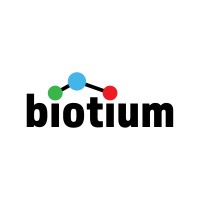MUC-1 Monoclonal / CF405M / MUC1/520
Product Details
| Description | Mucin 1 / EMA / Episialin / CD227 Monoclonal Mouse Antibody (MUC1/520) | |
|---|---|---|
| Conjugate | CF405M | |
| Clone | MUC1/520 | |
| Target Species | Human | |
| Applications | FC, IF, IHC-P | |
| Supplier | Biotium | |
| Catalog # | Sign in to view product details, citations, and spectra | |
| Size | ||
| Price | ||
| Antigen | ||
| Host | ||
| Isotype |
About MUC-1
This gene encodes a membrane-bound protein that is a member of the mucin family. Mucins are O-glycosylated proteins that play an essential role in forming protective mucous barriers on epithelial surfaces. These proteins also play a role in intracellular signaling. This protein is expressed on the apical surface of epithelial cells that line the mucosal surfaces of many different tissues including lung, breast stomach and pancreas. This protein is proteolytically cleaved into alpha and beta subunits that form a heterodimeric complex. The N-terminal alpha subunit functions in cell-adhesion and the C-terminal beta subunit is involved in cell signaling. Overexpression, aberrant intracellular localization, and changes in glycosylation of this protein have been associated with carcinomas. This gene is known to contain a highly polymorphic variable number tandem repeats (VNTR) domain. Alternate splicing results in multiple transcript variants.[provided by RefSeq, Feb 2011]
This gene encodes a membrane-bound protein that is a member of the mucin family. Mucins are O-glycosylated proteins that play an essential role in forming protective mucous barriers on epithelial surfaces. These proteins also play a role in intracellular signaling. This protein is expressed on the apical surface of epithelial cells that line the mucosal surfaces of many different tissues including lung, breast stomach and pancreas. This protein is proteolytically cleaved into alpha and beta subunits that form a heterodimeric complex. The N-terminal alpha subunit functions in cell-adhesion and the C-terminal beta subunit is involved in cell signaling. Overexpression, aberrant intracellular localization, and changes in glycosylation of this protein have been associated with carcinomas. This gene is known to contain a highly polymorphic variable number tandem repeats (VNTR) domain. Alternate splicing results in multiple transcript variants.[provided by RefSeq, Feb 2011]
About CF405M
CF®405M from Biotium is a fluorophore with an excitation peak at 408 nm and an emission peak at 452 nm. It is spectrally similar to Pacific Blue, V450 and DY-415. It can be use in fluorescence microscopy and flow cytometry. Specifically, it has been validated for use in STED, Structured Illumination (SIM) and 2-Photon microscopy. In flow cytometry, superior alternatives are Brilliant™ Violet 480, Brilliant™ Violet 510 and StarBright Violet 515.
CF®405M from Biotium is a fluorophore with an excitation peak at 408 nm and an emission peak at 452 nm. It is spectrally similar to Pacific Blue, V450 and DY-415. It can be use in fluorescence microscopy and flow cytometry. Specifically, it has been validated for use in STED, Structured Illumination (SIM) and 2-Photon microscopy. In flow cytometry, superior alternatives are Brilliant™ Violet 480, Brilliant™ Violet 510 and StarBright Violet 515.
Experiment Design Tools
Panel Builders
Looking to design a Microscopy or Flow Cytometry experiment?
Validation References
Reviews & Ratings
| Reviews |
|---|
Looking for more options?
2771 MUC-1 antibodies from over 38 suppliers available with over 81 conjugates.





